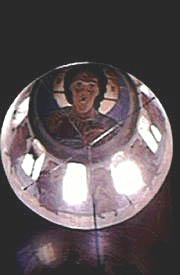
Prague Orthodox celebrated the 80th anniversary of the temple in Olšany
 |
According to him, the church is a visible expression of the brotherhood of Orthodox Czechs, Russians, and Serbs. It is also a dignified memorial to the Russian exiles who had to leave their homeland at the end of the second decade of the 20th century.
In the 1920s, the Orthodox Czech Karel Kramář, the first Prime Minister of Czechoslovakia, provided great assistance to the plan to build a cemetery chapel in Olšany. Significant financial resources also came from Serbia.
In addition to a large personal donation, Kramář, according to Archbishop Kryštof, organized collections that allowed for the construction of a magnificent church in the Byzantine style instead of the originally considered modest chapel, based on the Novgorod-Pskov architectural tradition. The space with a large crypt can accommodate more than one hundred believers.
In the crypt, among others, Karel Kramář and his wife Nadezhda Nikolajevna, who came from the Russian noble family Chlupov, found their final resting place.
The main architect of the church was Professor Vladimir Brandt of Kyiv University, who was later tortured by the Gestapo in Prague during World War II. The church was solemnly consecrated after the war on the Feast of the Dormition of the Most Holy Mother of God on November 22, 1925. The decoration is the work of Russian artists active in Prague and elsewhere in Western Europe.
Orthodox Prague residents began collecting funds for the construction of the cemetery chapel even before World War I. After the establishment of the Czechoslovak Republic, thousands of emigrants from war-torn Russia found refuge in Prague. The small community of Czech Orthodox Christians grew significantly.
In 1923 and 1927, it became necessary to expand the Orthodox section of the Olšany cemeteries. The Brotherhood of Orthodox Russian Citizens was established for the care and maintenance of their graves in Czechoslovakia, known as the Uspensky Brotherhood. In connection with the need for proper Orthodox burials and panikhidas, it became essential to implement an earlier project for the construction of the cemetery chapel. The Uspensky Brotherhood then became its new initiator.
A part of the Olšany Cemetery had been designated for Orthodox Prague residents since 1905. After the dissolution of the Karlín military cemetery, the remains of 45 Russian officers who died in Prague from injuries sustained during the Napoleonic Wars in 1813 were also transferred to Olšany. Their memorial was also relocated there.
> www.pravoslav.or.cz/olsany
The English translation is powered by AI tool. Switch to Czech to view the original text source.
0 comments
add comment










